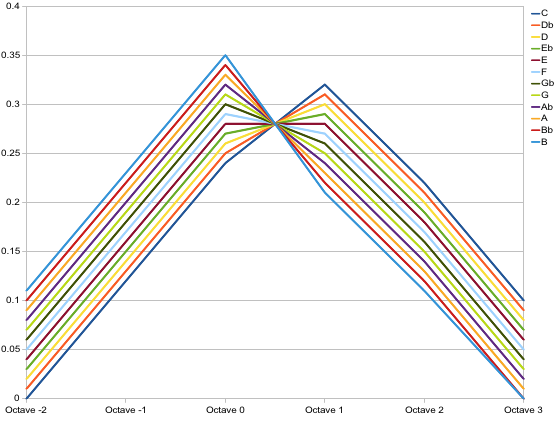
We think of which note you play and how high you play it as inseparable. You can play an A at 440Hz or 220Hz, but not in between. Playing "C D E F G A B C D E ..." at some point you need to hop down an octave or you'll keep getting higher. But is this really so? Consider:
Bb B C Db A D Ab Eb G Gb F E
These samples each consist of six octaves of the note stacked together, adjusting the weighting of each octave to try and keep the perceived pitch constant:
I'm using a linear adjustment, adding or subtracting 1% intensity with each change of note. The exact values are:
This might be easier to see in frequency space:Note: one note above an "octave -2 B" is an "octave -1 C".
note octave -2 octave -1 octave 0 octave 1 octave 2 octave 3 C 0% 12% 24% 32% 22% 10% Db 1% 13% 25% 31% 21% 9% D 2% 14% 26% 30% 20% 8% Eb 3% 15% 27% 29% 19% 7% E 4% 16% 28% 28% 18% 6% F 5% 17% 29% 27% 17% 5% Gb 6% 18% 30% 26% 16% 4% G 7% 19% 31% 25% 15% 3% Ab 8% 20% 32% 24% 14% 2% A 9% 21% 33% 23% 13% 1% Bb 10% 22% 34% 22% 12% 0% B 11% 23% 35% 21% 10% 0%
Intensity as a function of frequency for each sample.
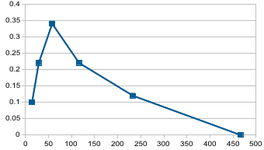
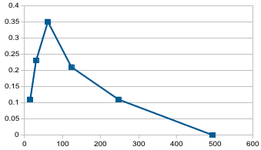
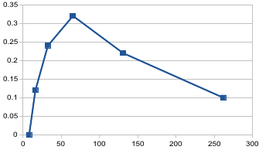
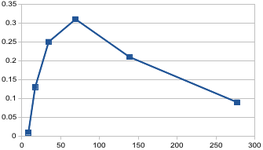
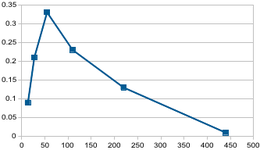
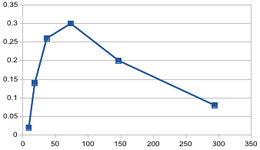
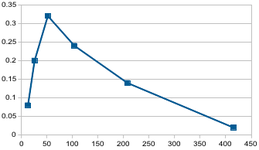
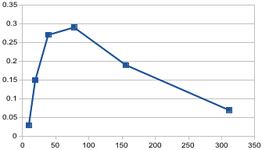
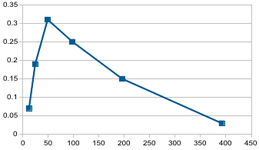
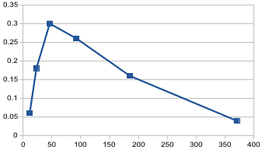
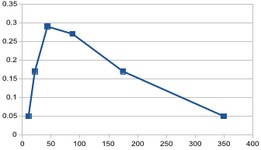
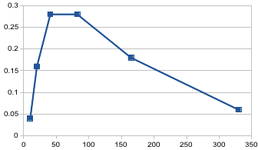
I'm not sure a linear change is correct here; it's possible we could decrease the perception of register change even more with better choices of note.
These are basically Shepard Tones, which are usually regarded as a cheap musicial trick. I'm interested in using them to create a bass pedalboard that uses only 12 or 13 pedals but without making octave-hopping sounds.
The code for the above samples, capable of live interaction, is on github